
Medical device company Zimmer Biomet (NYSE:ZBH) beat Wall Street’s revenue expectations in Q2 CY2025, with sales up 7% year on year to $2.08 billion. Its non-GAAP profit of $2.07 per share was 4.8% above analysts’ consensus estimates.
Is now the time to buy Zimmer Biomet? Find out by accessing our full research report, it’s free.
Zimmer Biomet (ZBH) Q2 CY2025 Highlights:
- Revenue: $2.08 billion vs analyst estimates of $2.05 billion (7% year-on-year growth, 1.5% beat)
- Adjusted EPS: $2.07 vs analyst estimates of $1.98 (4.8% beat)
- Adjusted EBITDA: $593 million vs analyst estimates of $673.8 million (28.5% margin, 12% miss)
- Management raised its full-year Adjusted EPS guidance to $8.20 at the midpoint, a 2.5% increase
- Operating Margin: 14.4%, down from 18.1% in the same quarter last year
- Free Cash Flow Margin: 18.7%, up from 13% in the same quarter last year
- Constant Currency Revenue rose 2.8% year on year (5.6% in the same quarter last year)
- Market Capitalization: $18.03 billion
Company Overview
With a history dating back to 1927 and a presence in over 100 countries worldwide, Zimmer Biomet (NYSE:ZBH) designs and manufactures orthopedic products including knee and hip replacements, surgical tools, and robotic technologies for joint reconstruction and spine surgeries.
Revenue Growth
A company’s long-term performance is an indicator of its overall quality. Any business can put up a good quarter or two, but many enduring ones grow for years. Unfortunately, Zimmer Biomet’s 3.3% annualized revenue growth over the last five years was tepid. This fell short of our benchmark for the healthcare sector and is a tough starting point for our analysis.
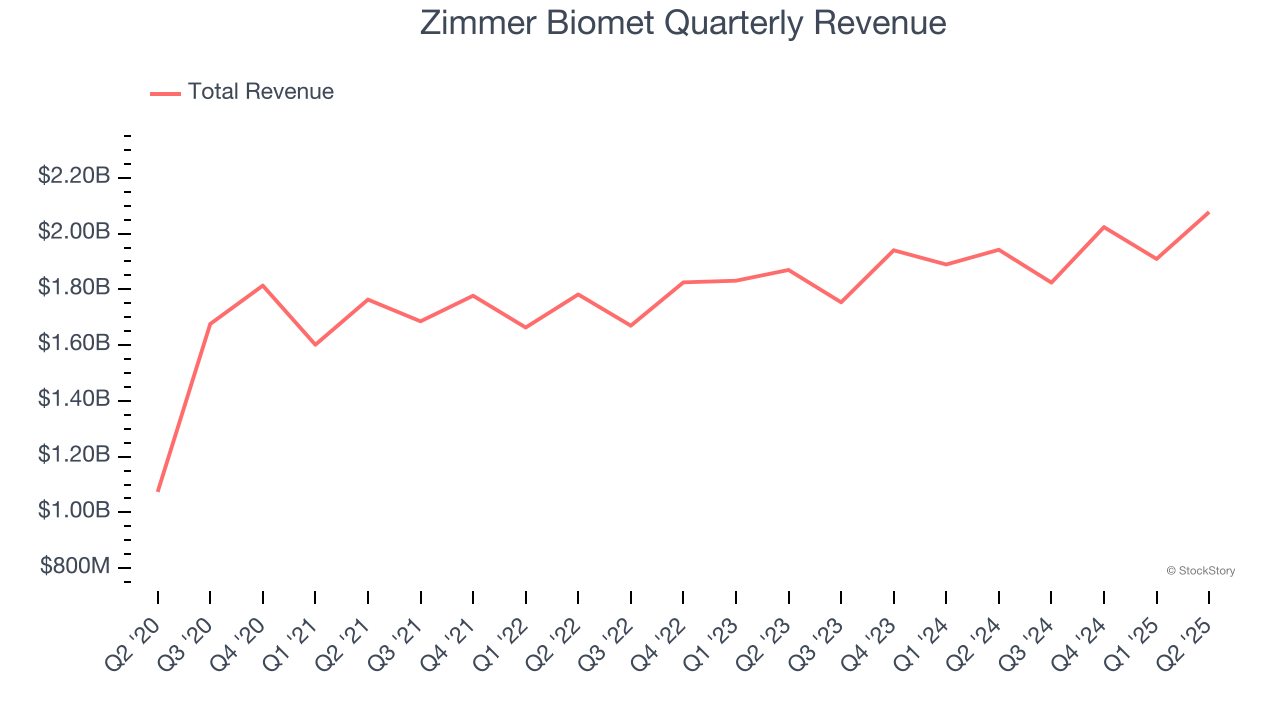
We at StockStory place the most emphasis on long-term growth, but within healthcare, a half-decade historical view may miss recent innovations or disruptive industry trends. Zimmer Biomet’s annualized revenue growth of 4.3% over the last two years is above its five-year trend, but we were still disappointed by the results. 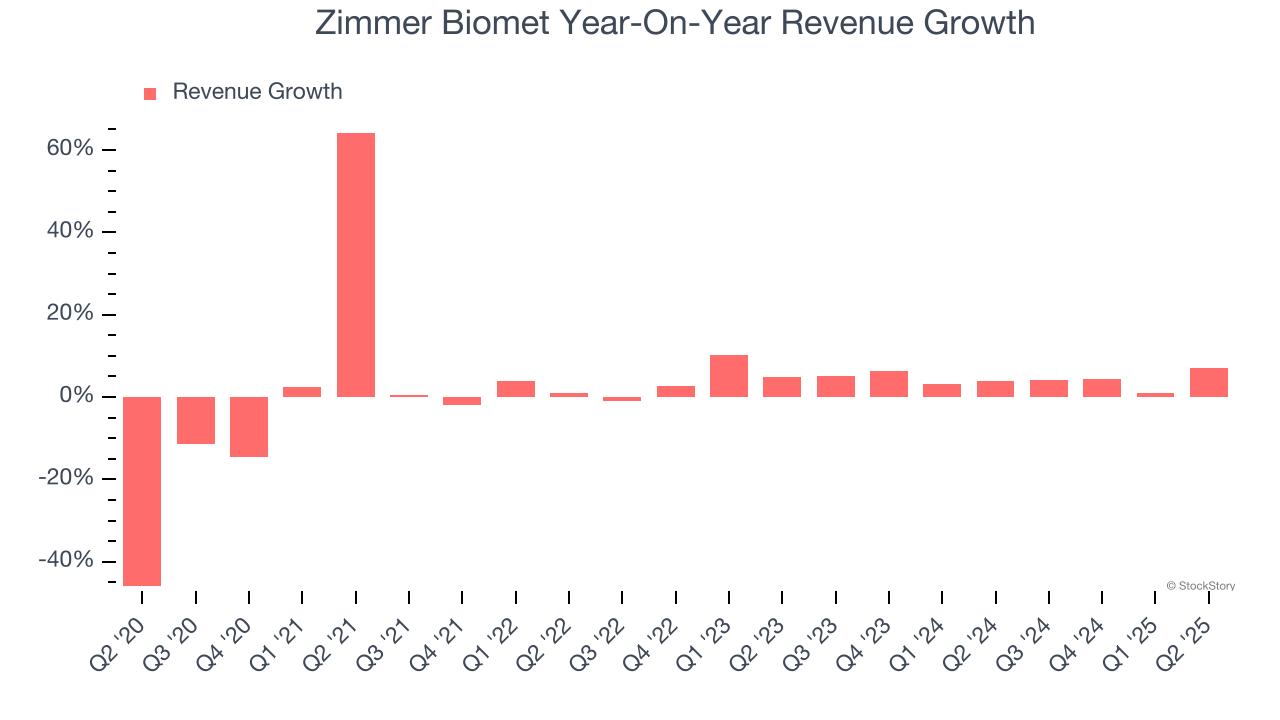
We can dig further into the company’s sales dynamics by analyzing its constant currency revenue, which excludes currency movements that are outside their control and not indicative of demand. Over the last two years, its constant currency sales averaged 4.4% year-on-year growth. Because this number aligns with its normal revenue growth, we can see that Zimmer Biomet has properly hedged its foreign currency exposure. 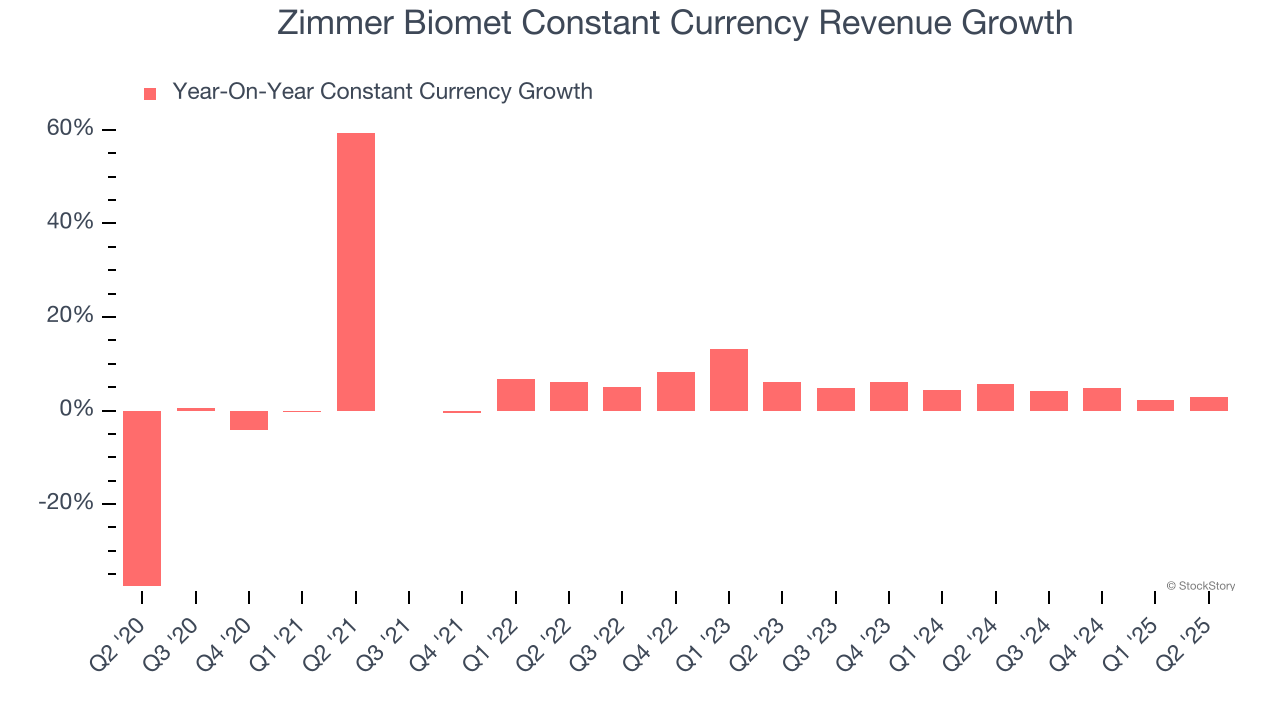
This quarter, Zimmer Biomet reported year-on-year revenue growth of 7%, and its $2.08 billion of revenue exceeded Wall Street’s estimates by 1.5%.
Looking ahead, sell-side analysts expect revenue to grow 7.8% over the next 12 months, an improvement versus the last two years. This projection is above the sector average and implies its newer products and services will spur better top-line performance.
Today’s young investors won’t have read the timeless lessons in Gorilla Game: Picking Winners In High Technology because it was written more than 20 years ago when Microsoft and Apple were first establishing their supremacy. But if we apply the same principles, then enterprise software stocks leveraging their own generative AI capabilities may well be the Gorillas of the future. So, in that spirit, we are excited to present our Special Free Report on a profitable, fast-growing enterprise software stock that is already riding the automation wave and looking to catch the generative AI next.
Operating Margin
Operating margin is an important measure of profitability as it shows the portion of revenue left after accounting for all core expenses – everything from the cost of goods sold to advertising and wages. It’s also useful for comparing profitability across companies with different levels of debt and tax rates because it excludes interest and taxes.
Zimmer Biomet has done a decent job managing its cost base over the last five years. The company has produced an average operating margin of 14.5%, higher than the broader healthcare sector.
Analyzing the trend in its profitability, Zimmer Biomet’s operating margin rose by 1.2 percentage points over the last five years, as its sales growth gave it operating leverage. This performance was mostly driven by its recent improvements as the company’s margin has increased by 3.9 percentage points on a two-year basis.
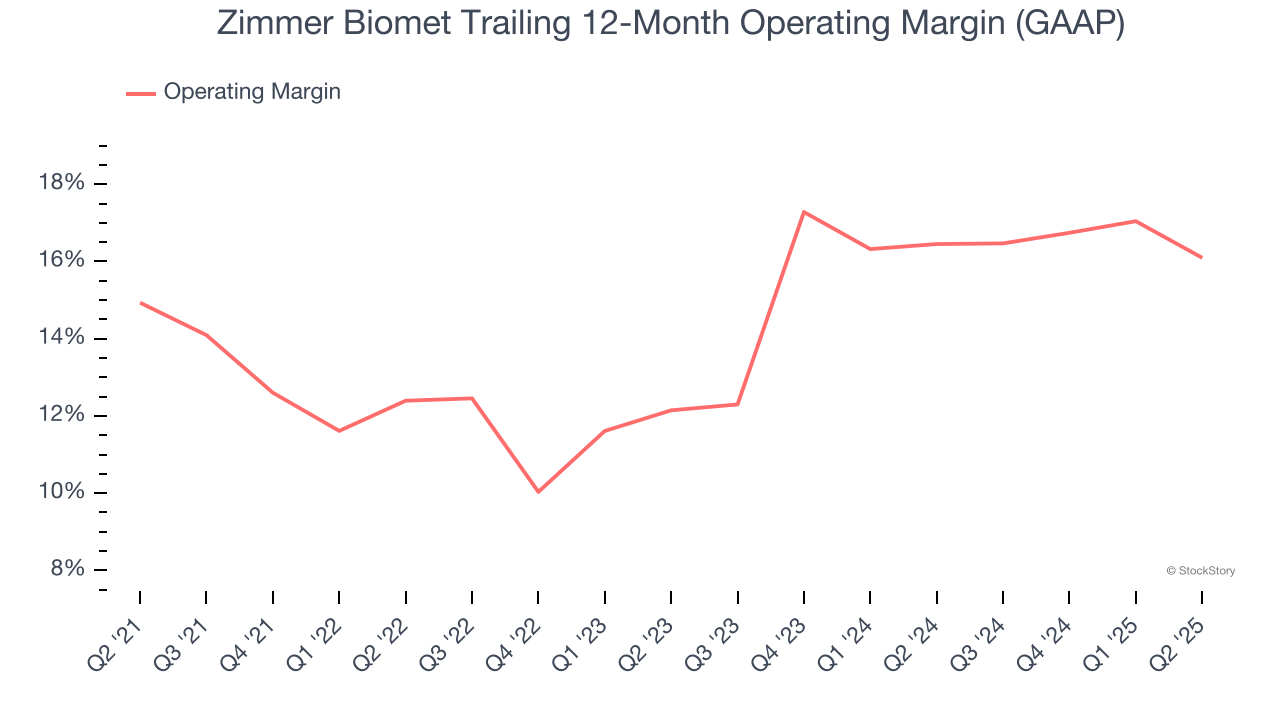
In Q2, Zimmer Biomet generated an operating margin profit margin of 14.4%, down 3.6 percentage points year on year. This contraction shows it was less efficient because its expenses grew faster than its revenue.
Earnings Per Share
Revenue trends explain a company’s historical growth, but the long-term change in earnings per share (EPS) points to the profitability of that growth – for example, a company could inflate its sales through excessive spending on advertising and promotions.
Zimmer Biomet’s EPS grew at a spectacular 14.5% compounded annual growth rate over the last five years, higher than its 3.3% annualized revenue growth. This tells us the company became more profitable on a per-share basis as it expanded.
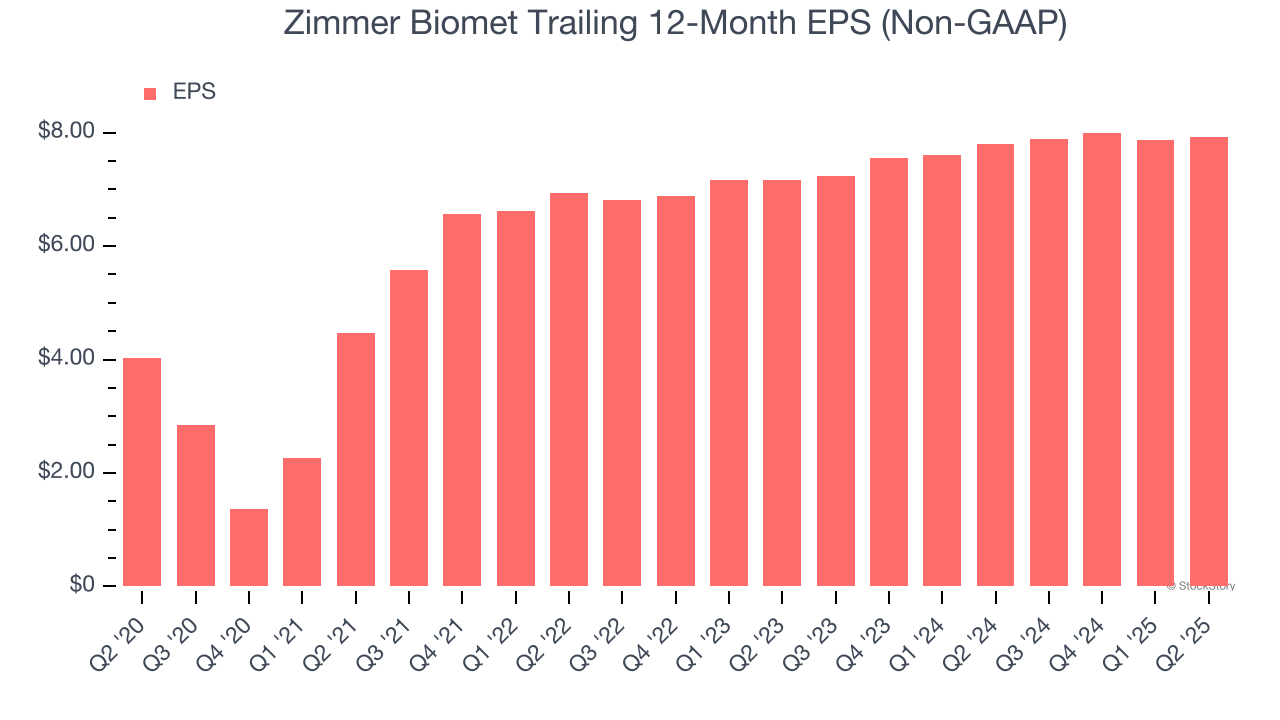
Diving into Zimmer Biomet’s quality of earnings can give us a better understanding of its performance. As we mentioned earlier, Zimmer Biomet’s operating margin declined this quarter but expanded by 1.2 percentage points over the last five years. Its share count also shrank by 4.1%, and these factors together are positive signs for shareholders because improving profitability and share buybacks turbocharge EPS growth relative to revenue growth. 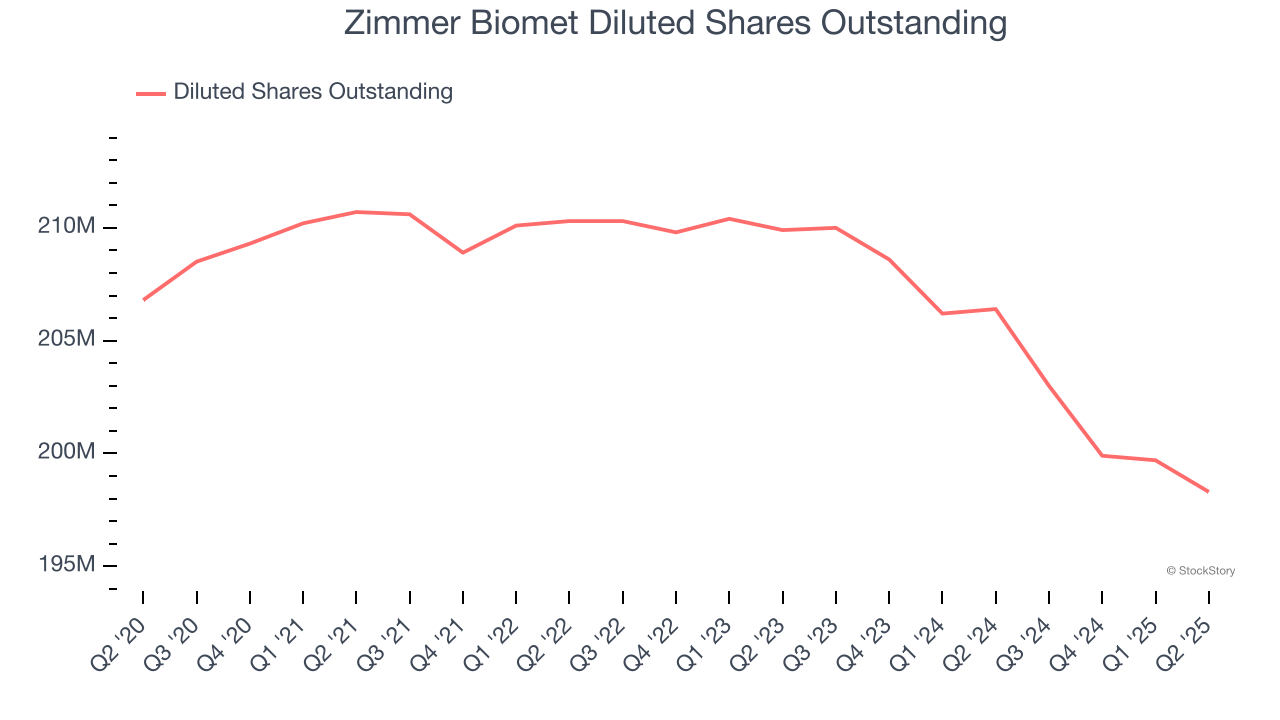
In Q2, Zimmer Biomet reported adjusted EPS at $2.07, up from $2.01 in the same quarter last year. This print beat analysts’ estimates by 4.8%. Over the next 12 months, Wall Street expects Zimmer Biomet’s full-year EPS of $7.93 to grow 2.3%.
Key Takeaways from Zimmer Biomet’s Q2 Results
We enjoyed seeing Zimmer Biomet beat analysts’ full-year EPS guidance expectations this quarter. We were also happy its revenue outperformed Wall Street’s estimates. On the other hand, its constant currency revenue missed. Overall, this print had some key positives. The stock traded up 7.7% to $98.13 immediately following the results.
Should you buy the stock or not? The latest quarter does matter, but not nearly as much as longer-term fundamentals and valuation, when deciding if the stock is a buy. We cover that in our actionable full research report which you can read here, it’s free.
